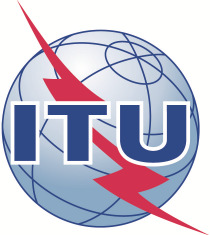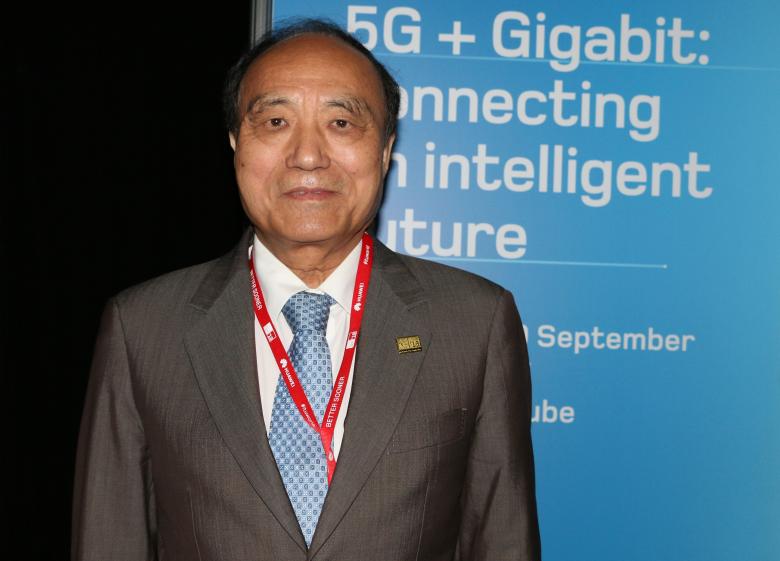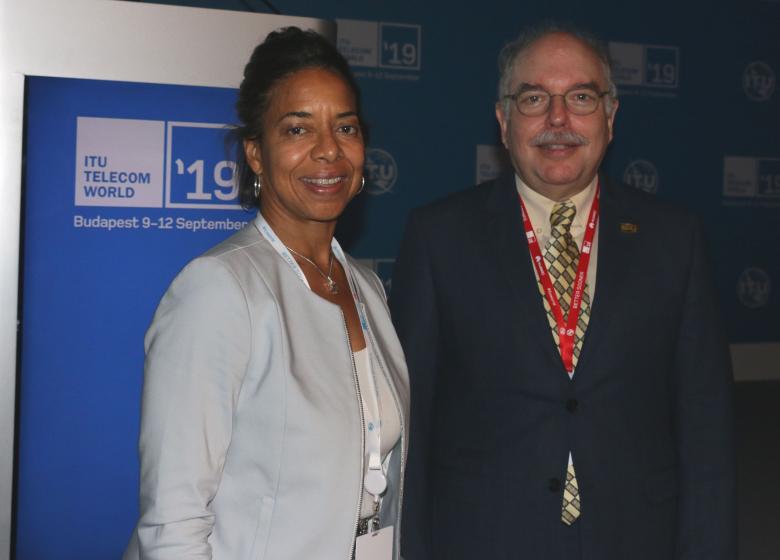
Telecom World 2019 Budapest

Telecommunications growing in importance
Telecom World, a meeting place between world players in telecommunications, took place in Budapest in September. It attracted more than 4,000 delegates from 125 countries, and 270 exhibitors from all over the world. The event saw a constant coming and going of presidential, ministerial and diplomatic cars. With a view to WRC19, forums and meetings were the center of attention. After accreditation and vetting, 104 press people were allowed to visit this exhibition and to participate in all activities and forums.
ITU controls use of frequencies
Telecommunications have radically changed our world, also in recent decades. And just think of the pioneers: Morse, Maxwell, Bell, Hertz, Marconi, Bell and many others. The developments in telecommunications seem to have no limits, and 5G is the most recent one. Increased bandwidth for Wi-Fi and other forms of telecommunication are in full development. Anyone who thinks that radio amateurs have been left behind has got it wrong. Within ITU, which plans and regulates all radio communications on a global level, IARU has a duty to defend our interests. In ITU News Magazine number 4, both ITU Secretary-General Mr. Houlin Zhao, and ITU Director of Radio Communications Mr. Mario Maniewicz, talk about WRC19 that is currently taking place in Sharm El Sheikh, Egypt. Extremely important here is the appreciation and affection they show for the radio amateur community.
We need international regulation
The radio spectrum needs to be regulated internationally because radio waves do not respect country borders. Regular consultation is needed between countries, and consensus must be found. To avoid interference between broadcasts that cross borders, all frequencies in use are recorded in the Master International Frequency Register. Two important considerations in this respect are propagation, and broadcasts that are important for society, such as weather radar, tsunami warnings and others.
Mario Maniewicz and Joanna Wilson
Mr Mario Maniewicz, director of the Radiocommunications Bureau, was a busy man, in anticipation of WRC19. Mrs. Joanna Wilson, Deputy to the Director, was kind enough to talk to us.
RR or Radio Regulations, a division of ITU, regulates all frequencies and the use of the entire radio spectrum, both for ground and space communication. The first International Radio Telegraph Convention was organized in 1906. Since then, adjustments are made every 4 years during the WRC. At the time of release of CQ-QSO, WRC19 is still ongoing in Sharm El Sheikh in Egypt. The 193 countries affiliated with ITU send more than 3,000 specialists to WRC, each of them experts in their own domain. A delegation from BIPT and a delegation from IARU are also present at this important meeting.
Radio regulations and radio amateurs
Different target groups make use of the radio spectrum: mobile telephony, satellite communication, maritime services, emergency services, aviation, science and public broadcasting radio and television.
Land-based telecommunications, to which the radio amateur frequencies belong, are on the agenda under point 1.1. The discussion of this item on the agenda, which became possible after resolution 658 was adopted during WRC15, deals with the full allocation of the 50-54 MHz frequency band to the radio amateurs in ITU Region1. Currently there are also no longer any problems for maintaining the 144-146 MHz.
Every sector wants more frequencies
The frequency bands from 24.25 GHz to 86 GHz are in high demand for IMT or International Mobile Telecommunications and the future development of 5G. A consensus will be reached for the 24.25-27.5 GHz, 37-43.5 GHz and 66-71 GHz frequencies. There is no change for the existing frequencies 31.8-33.4 GHz, 71-76 GHz and 81-86 GHz. As far as Wi-Fi is concerned, there will be a 300-425 MHz expansion of the 5GHZ Wi-Fi band. There is no change for the frequencies 5,250-5,470 GHz and 5,850-5,925 GHz. There are doubts about the 5,725-5,850 GHz band where various radar systems interfere which each other.
For the HAPs or High Altitude Platforms, i.e. balloons or drones operating at an altitude of 20 to 26 km, more bandwidth is also required outside the current frequencies. These additional frequencies are mainly sought within the 38-39.5 GHZ, and in ITU Region2 within the 21.4-22 GHZ and 24.25-27.5 GHz. HAPs cover a circular area with a diameter slightly larger than 100 km on the ground. They are primarily used for providing internet and for fast setup of networking in the event of disasters.
Transport sector wants more radio spectrum
At IMO or International Maritime Organization, modernization and adaptation is still in full swing. There is an option to replace NAVTEX (Navigation Telex) with NAVDAT (Navigation Data). There is also a proposal to use additional satellite systems within the network of GMDSS or Global Maritime Distress and Safety. This proposal concerns the Iridium NGSO system that was recognized as an additional operator within the GMDSS system, because Iridium covers the world with its satellites, including both polar regions. Iridium uses the 1616-1626.5 MHz frequency range. Then there is GADSS or Global Aeronautical Distress and Safety System, which gained importance after the disaster with flight MH-370. On March 8, 2014, flight MH-370 disappeared between Kuala Lumpur and Beijing without leaving any trace. A list of frequencies will now be fixed that will be used to transmit the position and any emergency signals for each aircraft, every minute and every 15 minutes.
For RSTT or Radiocommunication Systems between Train and Trackside there are three proposals for harmonization. This mainly concerns the train control and video surveillance of trains.
ITS or Intelligent Transport Systems must ensure safer traffic. By increased use of telecommunications, the World Health Organization wants to significantly reduce the number of road deaths. In 2018 there were just over 1.4 billion vehicles, but there were also more than 1.35 million road deaths. Traffic is the leading cause of death for young people aged between 5 and 29 years.
Currently, in Europe, the 5855-5925 MHz frequency band is reserved for ITS, but in other parts of the world this is 5850-5925 MHz. WRC19 strives to reach a uniform arrangement all over the world.
5G, a new milestone?
In the press booth, 25 people were given the opportunity to ask the person in charge at Huawei questions about the problems that had arisen in connection with alleged espionage. The US representative of Huawei denied any suspicion of espionage and stated that Huawei plays a leading role in the development of 5G. Next year, when 5G will see its breakthrough after WRC19, Telecom World will be organised in the Vietnamese capital Hanoi. The East is fully committed to the new developments, and Europe seems to be lagging behind. Hungary recognized the importance of such meetings and contacts.
The importance of ITU and IARU for radio amateurs
Telecom and digitization are an integral part of today's society. ITU provides the necessary regulations, and IARU defends the position of radio amateurs in the large frequency spectrum. UBA has a say in the decision making of IARU1.
After the WRC19 forum, led by Mrs. Joanna Wilson, we had the opportunity to meet her and Mr. Mario Maniewicz. Mr Maniewicz explained to us that he is always available for the telecommunications sector and for radio amateurs.
Telecom World, a meeting place between world players in telecommunications, took place in Budapest in September. It attracted more than 4,000 delegates from 125 countries, and 270 exhibitors from all over the world. The event saw a constant coming and going of presidential, ministerial and diplomatic cars. With a view to WRC19, forums and meetings were the center of attention. After accreditation and vetting, 104 press people were allowed to visit this exhibition and to participate in all activities and forums.
ITU controls use of frequencies
Telecommunications have radically changed our world, also in recent decades. And just think of the pioneers: Morse, Maxwell, Bell, Hertz, Marconi, Bell and many others. The developments in telecommunications seem to have no limits, and 5G is the most recent one. Increased bandwidth for Wi-Fi and other forms of telecommunication are in full development. Anyone who thinks that radio amateurs have been left behind has got it wrong. Within ITU, which plans and regulates all radio communications on a global level, IARU has a duty to defend our interests. In ITU News Magazine number 4, both ITU Secretary-General Mr. Houlin Zhao, and ITU Director of Radio Communications Mr. Mario Maniewicz, talk about WRC19 that is currently taking place in Sharm El Sheikh, Egypt. Extremely important here is the appreciation and affection they show for the radio amateur community.
We need international regulation
The radio spectrum needs to be regulated internationally because radio waves do not respect country borders. Regular consultation is needed between countries, and consensus must be found. To avoid interference between broadcasts that cross borders, all frequencies in use are recorded in the Master International Frequency Register. Two important considerations in this respect are propagation, and broadcasts that are important for society, such as weather radar, tsunami warnings and others.
Mario Maniewicz and Joanna Wilson
Mr Mario Maniewicz, director of the Radiocommunications Bureau, was a busy man, in anticipation of WRC19. Mrs. Joanna Wilson, Deputy to the Director, was kind enough to talk to us.
RR or Radio Regulations, a division of ITU, regulates all frequencies and the use of the entire radio spectrum, both for ground and space communication. The first International Radio Telegraph Convention was organized in 1906. Since then, adjustments are made every 4 years during the WRC. At the time of release of CQ-QSO, WRC19 is still ongoing in Sharm El Sheikh in Egypt. The 193 countries affiliated with ITU send more than 3,000 specialists to WRC, each of them experts in their own domain. A delegation from BIPT and a delegation from IARU are also present at this important meeting.
Radio regulations and radio amateurs
Different target groups make use of the radio spectrum: mobile telephony, satellite communication, maritime services, emergency services, aviation, science and public broadcasting radio and television.
Land-based telecommunications, to which the radio amateur frequencies belong, are on the agenda under point 1.1. The discussion of this item on the agenda, which became possible after resolution 658 was adopted during WRC15, deals with the full allocation of the 50-54 MHz frequency band to the radio amateurs in ITU Region1. Currently there are also no longer any problems for maintaining the 144-146 MHz.
Every sector wants more frequencies
The frequency bands from 24.25 GHz to 86 GHz are in high demand for IMT or International Mobile Telecommunications and the future development of 5G. A consensus will be reached for the 24.25-27.5 GHz, 37-43.5 GHz and 66-71 GHz frequencies. There is no change for the existing frequencies 31.8-33.4 GHz, 71-76 GHz and 81-86 GHz. As far as Wi-Fi is concerned, there will be a 300-425 MHz expansion of the 5GHZ Wi-Fi band. There is no change for the frequencies 5,250-5,470 GHz and 5,850-5,925 GHz. There are doubts about the 5,725-5,850 GHz band where various radar systems interfere which each other.
For the HAPs or High Altitude Platforms, i.e. balloons or drones operating at an altitude of 20 to 26 km, more bandwidth is also required outside the current frequencies. These additional frequencies are mainly sought within the 38-39.5 GHZ, and in ITU Region2 within the 21.4-22 GHZ and 24.25-27.5 GHz. HAPs cover a circular area with a diameter slightly larger than 100 km on the ground. They are primarily used for providing internet and for fast setup of networking in the event of disasters.
Transport sector wants more radio spectrum
At IMO or International Maritime Organization, modernization and adaptation is still in full swing. There is an option to replace NAVTEX (Navigation Telex) with NAVDAT (Navigation Data). There is also a proposal to use additional satellite systems within the network of GMDSS or Global Maritime Distress and Safety. This proposal concerns the Iridium NGSO system that was recognized as an additional operator within the GMDSS system, because Iridium covers the world with its satellites, including both polar regions. Iridium uses the 1616-1626.5 MHz frequency range. Then there is GADSS or Global Aeronautical Distress and Safety System, which gained importance after the disaster with flight MH-370. On March 8, 2014, flight MH-370 disappeared between Kuala Lumpur and Beijing without leaving any trace. A list of frequencies will now be fixed that will be used to transmit the position and any emergency signals for each aircraft, every minute and every 15 minutes.
For RSTT or Radiocommunication Systems between Train and Trackside there are three proposals for harmonization. This mainly concerns the train control and video surveillance of trains.
ITS or Intelligent Transport Systems must ensure safer traffic. By increased use of telecommunications, the World Health Organization wants to significantly reduce the number of road deaths. In 2018 there were just over 1.4 billion vehicles, but there were also more than 1.35 million road deaths. Traffic is the leading cause of death for young people aged between 5 and 29 years.
Currently, in Europe, the 5855-5925 MHz frequency band is reserved for ITS, but in other parts of the world this is 5850-5925 MHz. WRC19 strives to reach a uniform arrangement all over the world.
5G, a new milestone?
In the press booth, 25 people were given the opportunity to ask the person in charge at Huawei questions about the problems that had arisen in connection with alleged espionage. The US representative of Huawei denied any suspicion of espionage and stated that Huawei plays a leading role in the development of 5G. Next year, when 5G will see its breakthrough after WRC19, Telecom World will be organised in the Vietnamese capital Hanoi. The East is fully committed to the new developments, and Europe seems to be lagging behind. Hungary recognized the importance of such meetings and contacts.
The importance of ITU and IARU for radio amateurs
Telecom and digitization are an integral part of today's society. ITU provides the necessary regulations, and IARU defends the position of radio amateurs in the large frequency spectrum. UBA has a say in the decision making of IARU1.
After the WRC19 forum, led by Mrs. Joanna Wilson, we had the opportunity to meet her and Mr. Mario Maniewicz. Mr Maniewicz explained to us that he is always available for the telecommunications sector and for radio amateurs.
 The University of the Chinese Army, present in Budapest with a special booth, still attaches great importance to radio contacts in HF and Morse code. |
 The general management of the ITU lies with Secretary-General Mr Houlin Zhao. |
Secretary-General Houlin Zhao together with all actors after signing the agreement “emergency communication by satellite”. |
 ITU Director of Radio Communications, Mr Mario Maniewicz and Deputy Director, Mrs Joanna Wilson, after the WRC19 forum. |


